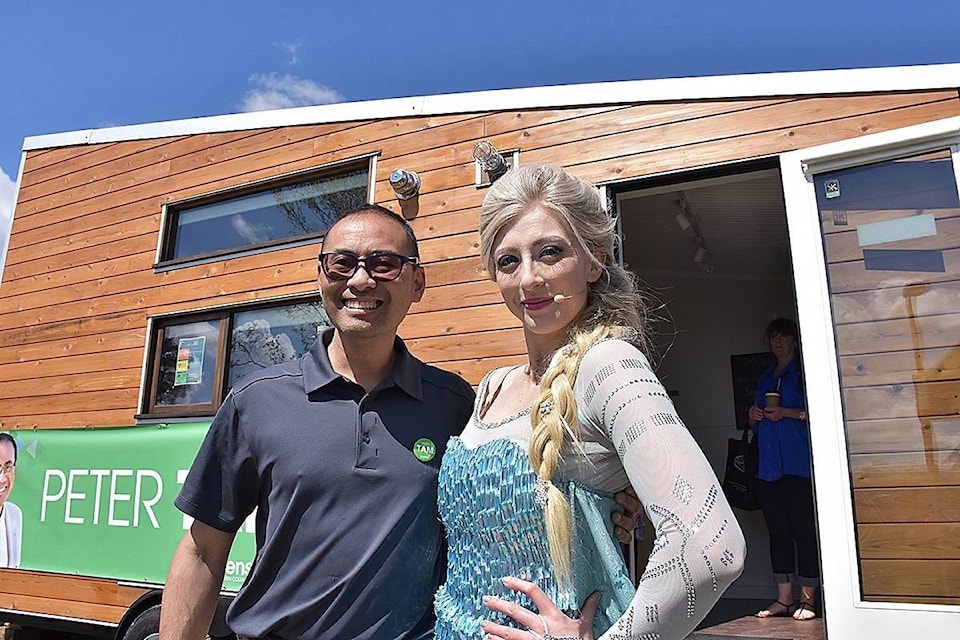Maple Ridge will be well represented when it comes to hashing out possible new ways of electing B.C. politicians this fall.
Maple Ridge-Mission MLA Bob D’Eith and Sonia Furstenau, Green MLA for Cowichan Valley, are leading the working group named by the government in December to recommend which systems will go to the public for a vote.
The consultation is to decide on the question to be put to a provincewide referendum on changing the electoral system.
B.C. Liberal MLAs, however, have criticized the NDP government’s decision to make the vote a simple majority, which they say would favour Lower Mainland voters.
In addition to D’Eith, Maple Ridge Green party candidate Peter Tam will be on the Fair Vote Canada committee that will do its part talking about proportional representation during 2018.
“We’ll try to put together ways of bringing proportional representation. The reason why the last referendum failed was because the question wasn’t too clear,” Tam said.
A move to a single transferable vote system was rejected during a 2005 B.C. referendum because it didn’t receive the required 60 per cent threshold. A referendum on STV in 2009 also failed.
Tam said Fair Vote Canada also wants to get out as much information as possible, in a non-partisan fashion in ways that are as simple to understand as possible.
Tam said the biggest challenge would be to simplify the question and proposed electoral voting systems so that people can understand what they’ll be voting on.
For Green party members, changing the voting system so that the actual election result represents how people actually voted, is a major issue. He said that 17 per cent of people who vote, are not represented in the current first-past-the-post system where the candidate with the simple majority of votes, gets elected.
Under a proportional system, the number of seats in the legislature would be proportional to a party’s share of the overall vote.
In the 2017 B.C. election, D’Eith was elected with 42 per cent of the vote. The Liberals took 41 per cent and the Greens 13 per cent.
Tam acknowledged, though, that many oppose changing the current system, which often leads to simple majorities of seats in the house, even though many voters are not represented by those parties.
D’Eith said the working group, representing NDP and Green party caucuses, is focused on developing a referendum question that can be put to cabinet. “It’s a question of determining what’s the best way to ask the public about whether they want the present first-past-the-post system or another system and how that should be asked, so that it’s fair.”
They also have to make sure that the process and campaigns leading up to the referendum are fair.
There are no dates set yet for meetings or public consultation. “That will be part of the process.”
He re-affirmed that the vote will take place via mail-in ballots, however.
The topic is drawing interest from voters who think their votes don’t count. He urged people who are interested to get involved with the process. People can also submit their ideas online.
Once there’s a question established, a date for the mail-in ballot has to be determined.
“Right now, we’re in the initial public consultation period in terms of what the referendum should look like.”
Tam acknowledged that proportional representation isn’t perfect. But there are steps that can be taken to ensure fringe parties such, are not overrepresented. One such measure would be to require a minimum number of votes before a group is given party status.
The government’s proposal is to have a referendum pass with a simple 50-per-cent plus one result, meaning that a razor-thin win in the referendum would be enough to change the system.
Tam said it’s possible the vote could be comprised of two questions, the first asking people if they want a change, the second asking them if they like the new system proposed.
If adopted, it will change B.C. politics, he added. “There are pros and cons. It’s going to change a lot of things. The safe seats will be gone.”
B.C. Green Party leader Andrew Weaver initially wanted to impose proportional representation without a referendum, but then agreed to a mail-in vote as part of his deal to support the NDP minority government. That trade-off included the NDP agreeing to offer more than one alternative to the winner-take-all voting system that B.C. has used for most of its history.
The government’s website allows people to check out various voting systems.
It also explains the different systems in place around the world:
• First Past the Post, also called Single Member Plurality (SMP);
• List Proportional Representation (List PR);
• Single Transferable Vote (STV);
• Mixed-Member Proportional (MMP);
• Mixed-Member Majoritarian (MMM) (also called Parallel).
